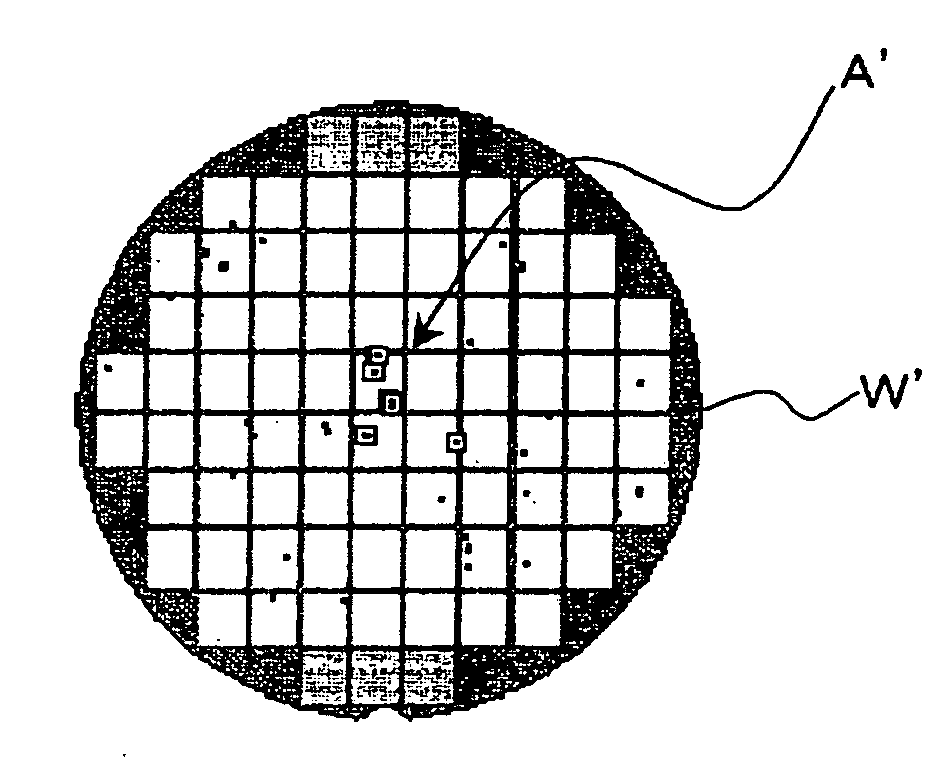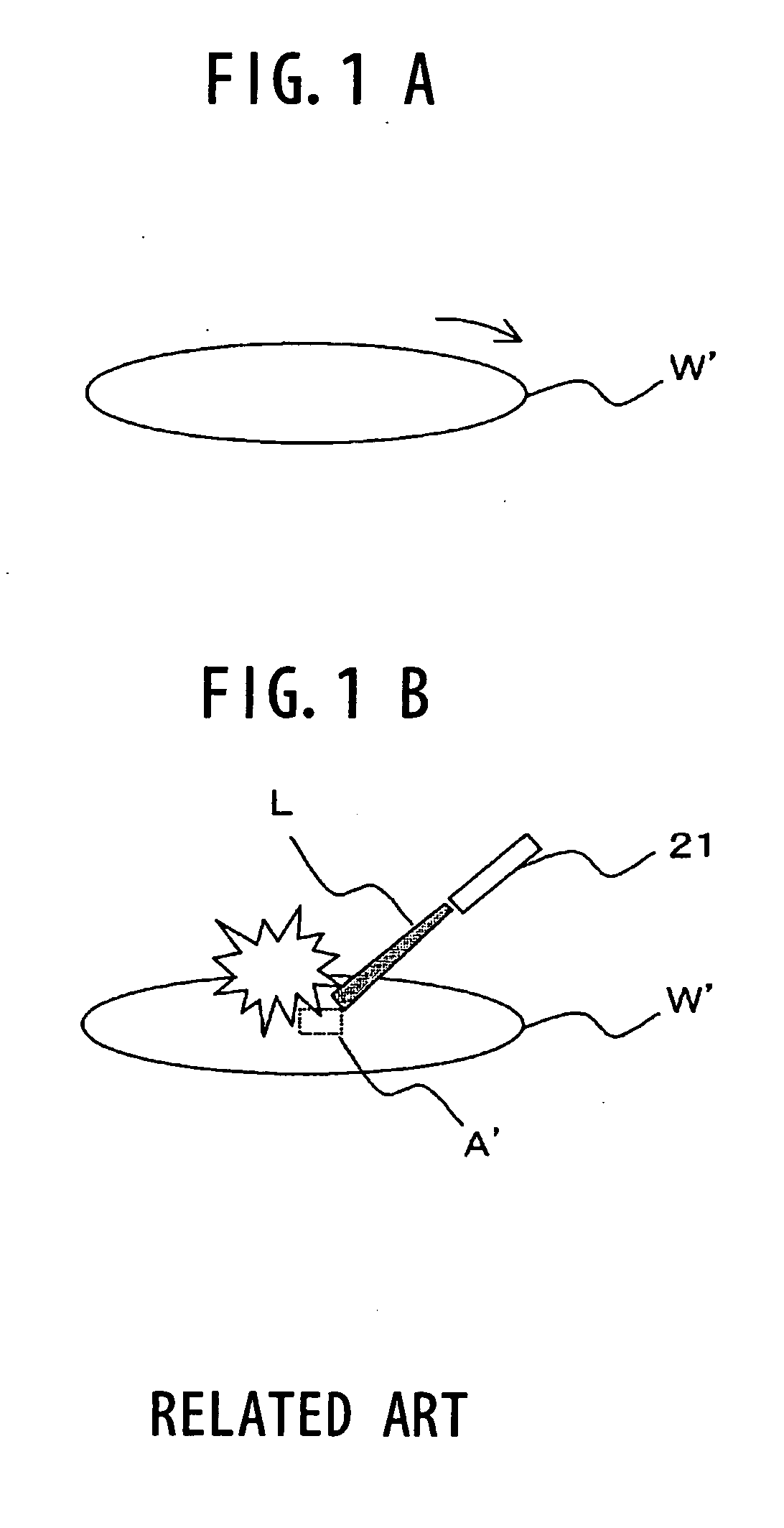Substrate treatment method
a treatment method and substrate technology, applied in the direction of cleaning process and equipment, cleaning using liquids, chemistry apparatus and processes, etc., can solve the problems of low degree of electrolytic dissociation, low concentration of chemical liquids, and high resistivity of liquids, so as to achieve low resistance, high resistivity, and high resistivity
- Summary
- Abstract
- Description
- Claims
- Application Information
AI Technical Summary
Benefits of technology
Problems solved by technology
Method used
Image
Examples
Embodiment Construction
[0017] Hereinbelow, an embodiment of the present invention will be described in detail with reference to the accompanying drawings. As an example of the substrate treatment method, removal of a resist pattern remaining on the surface of the substrate using concentrated sulfuric acid is described below.
[0018] As shown in FIG. 2A, a wafer W having, for example, a residual resist pattern is first introduced into a processing chamber of a not shown single wafer processing apparatus, and the wafer W is held by a holding member set in the processing chamber. In the processing chamber, above the holding member are arranged a second nozzle 12 for feeding a chemical liquid to the surface of the wafer W held by the holding member and a first nozzle 11 for feeding a liquid substance having a resistivity lower than that of the chemical liquid to the surface of the wafer W. Then, the holding member is spun while keeping the wafer W horizontal.
[0019] Then, as shown in FIG. 2B, a liquid substanc...
PUM
| Property | Measurement | Unit |
|---|---|---|
| resistivity | aaaaa | aaaaa |
| resistivity | aaaaa | aaaaa |
| resistivity | aaaaa | aaaaa |
Abstract
Description
Claims
Application Information
 Login to View More
Login to View More - R&D
- Intellectual Property
- Life Sciences
- Materials
- Tech Scout
- Unparalleled Data Quality
- Higher Quality Content
- 60% Fewer Hallucinations
Browse by: Latest US Patents, China's latest patents, Technical Efficacy Thesaurus, Application Domain, Technology Topic, Popular Technical Reports.
© 2025 PatSnap. All rights reserved.Legal|Privacy policy|Modern Slavery Act Transparency Statement|Sitemap|About US| Contact US: help@patsnap.com



